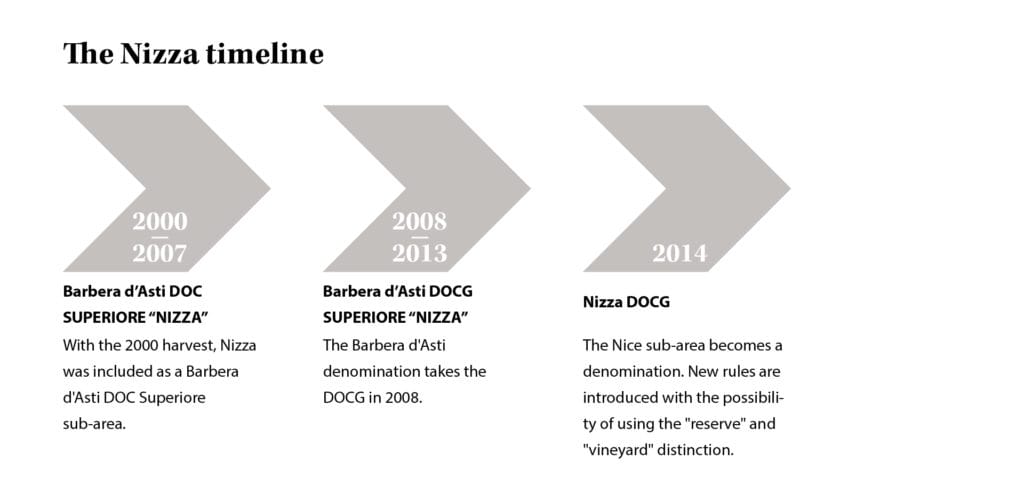With a very ancient history behind it, Barbera is the most widely cultivated vine in Piedmont and has always been a symbol of the Vinchio and Vaglio Serra hills.
The foggy mornings give way to sunny afternoons and cool evenings, while the steep hills cover the sandy, calcareous soil rich in shells that surfaced from the seabed 2 million years ago. All of this, combined with the extrardinary labours of the winegrowers, is the ideal alchemy for Barbera.
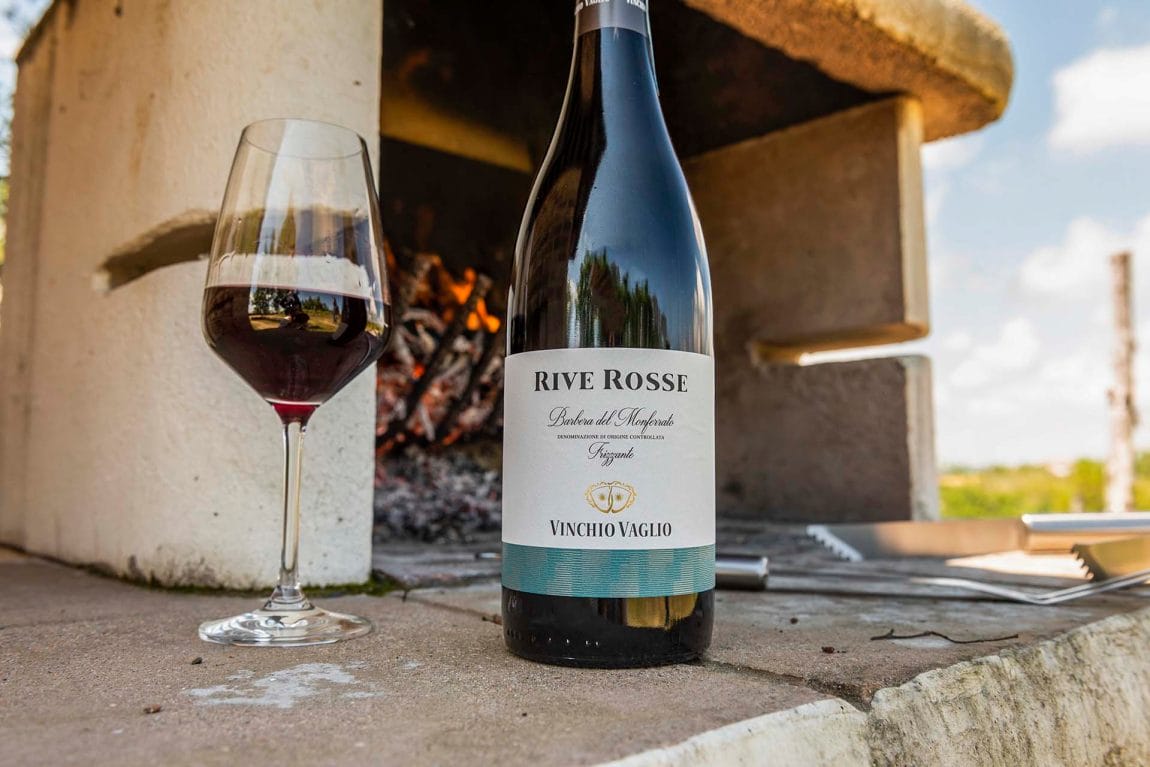

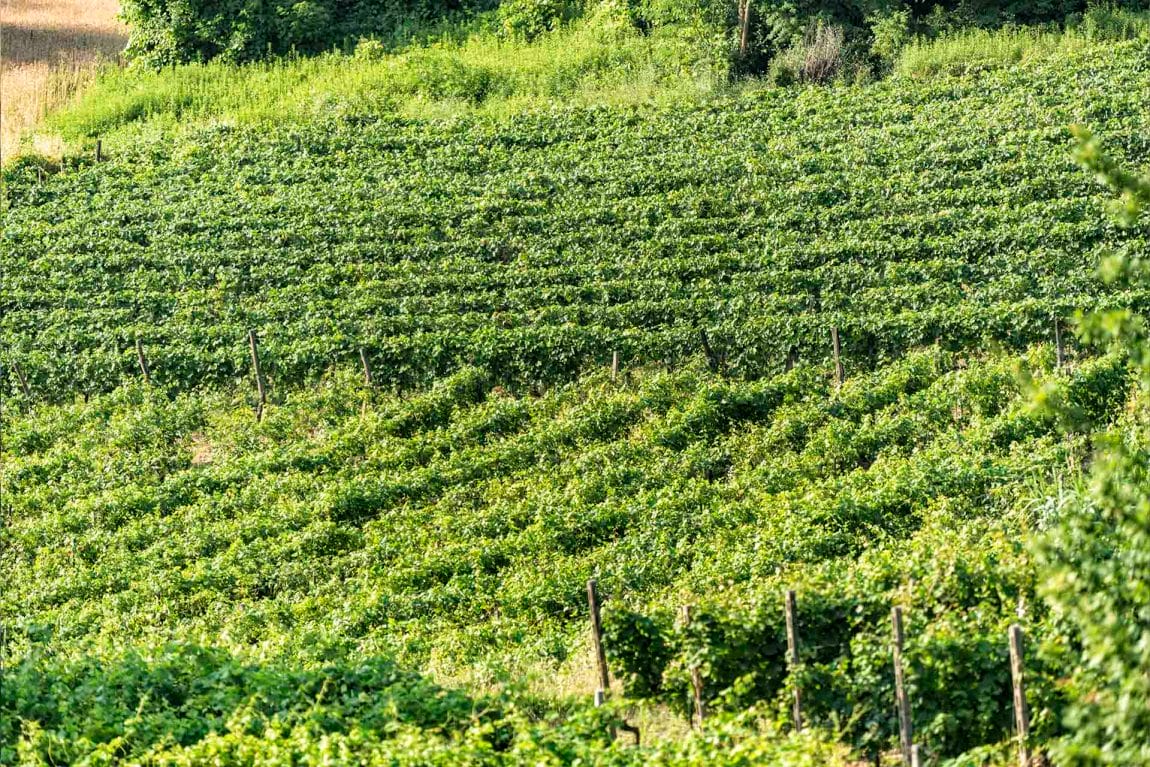
The guidelines for the production of Barbera include all the rules governing wine production related to the designation of origin, so that wine can claim its appellation, however they also represent a veritable outline that identifies the production area, the ampelographic base, the rules for viticulture and wine-making, as well as for labelling and packaging.
A set of rules that are concealed under a single objective: to guarantee the quality of the wine.

Barbera’s outline
Barbera has a pyramid-shaped, compact, deep purple bunch with oval grapes. The leaf is medium-sized, five-lobed and the cultivation system is Guyot espalier.
While sprouting is fairly early, ripening is medium-late, between late September and early October (you can read the harvest reports of all recent vintages here).
Barbera is one of the most versatile vines we know, as it is capable of producing wines that are as young, fruity, sometimes sparkling, as they are more austere, with great structure and longevity. A wine with high acidity, little tannin and very high compatibility with food.
The colour of the wine is ruby red and tends to garnet with age. The bouquet is intense, vinous when young, persistent: cherry, plum, dark berries prevail, evolving into hints of jam and fruit under spirits, then with more or less intense balsamic, spicy and sometimes floral notes; while ageing in wood, it develops hints of cinnamon, cocoa and liquorice.
On the palate it is full, with great warmth and harmony, and ageing gives complexity and richness of sweet, velvety tannins with a long taste-olfactory persistence.
Territory: 167 authorised municipalities in the provinces of Asti and Alessandria.
Ampelographic base: 100% Barbera vine Output per hectare: 90 quintals
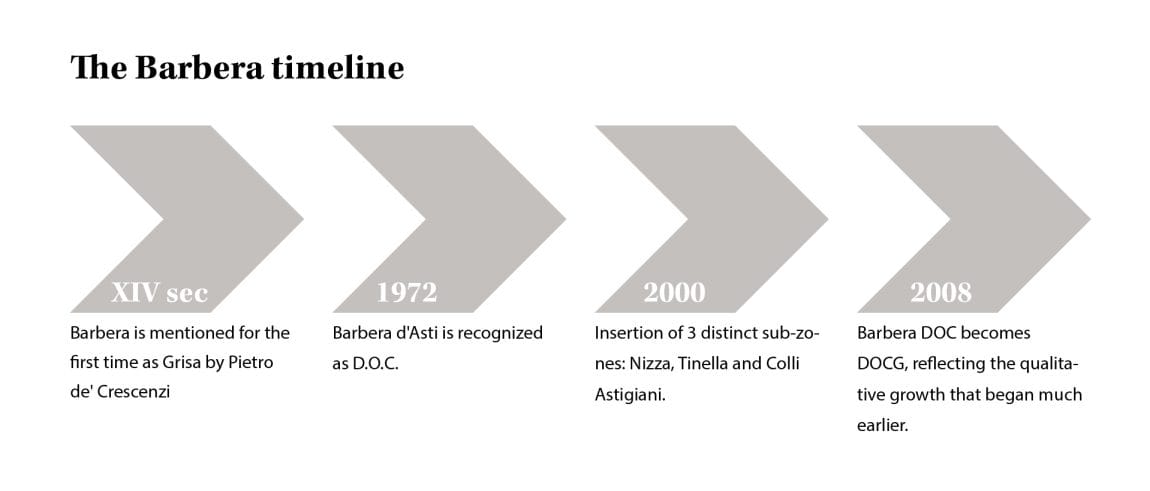
The Barbera Pyramid
The Barbera pyramid, perfected by oenologist Giuliano Noè (historic oenologist of Vinchio Vaglio winery), sees at its base, much enlarged, the Piedmont DOC Barbera, upon which are placed in order, in terms of production and output, the DOCG Barbera d’Asti, Barbera d’Asti Superiore, Nizza and Nizza Riserva.
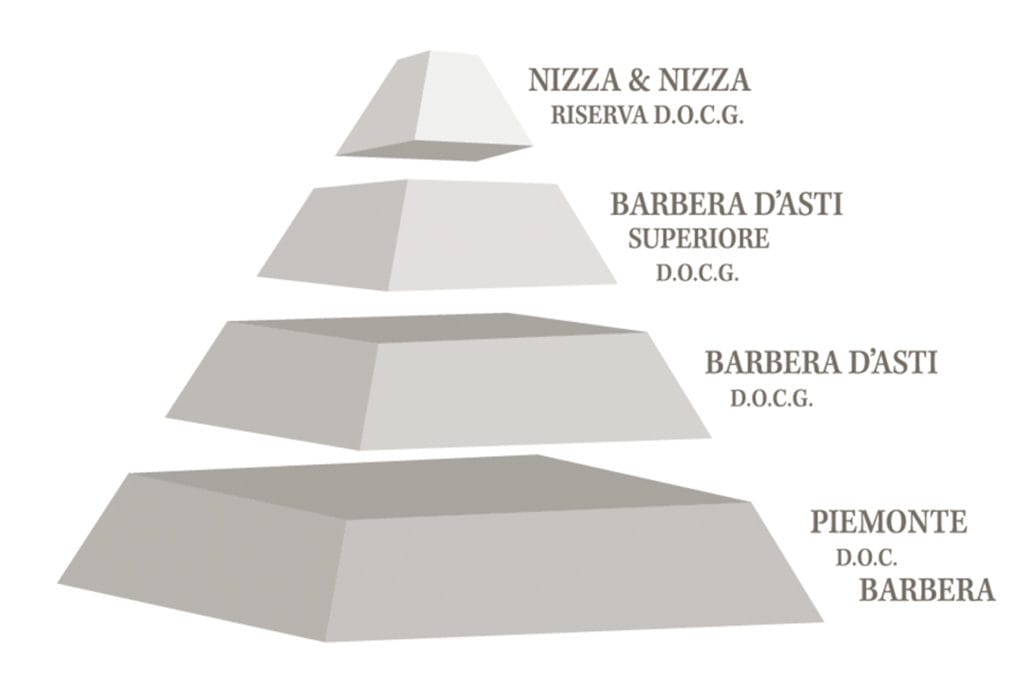
BARBERA D’ASTI D.O.C.G. AND BARBERA D’ASTI SUPERIORE D.O.C.G.
Acknowledged as DOCG in 1970, Barbera d’Asti, albeit being an easy-drinking wine, can wait for years to be consumed at its best.
D.O.C.G. Barbera d’Asti wine can be released for consumption no earlier than March 1st following the harvest, while Barbera d’Asti Superiore no earlier than January 1st following the second year after the harvest, with a compulsory ageing period of at least six months in wooden barrels.
In order to claim the Superiore classification, wines must be obtained from a more restricted selection of high quality grapes and must have a minimum alcohol content of 12.5%. The wines are aged in the cellar for a mandatory period of 14 months, six of which must be spent in wooden barrels, and being very long-lived wines, they can be appreciated even after 10 years in the bottle.
Features of Barbera d’Asti and Superiore wines for consumption:
- minimum total alcoholic strength by volume: 12.00%; for Superiore 12.50%;
- minimum total acidity: 4.5 g/l.
- minimum non-reducing extract: 24.0 g/l; for Superiore 25.0 g/l;
- minimum ageing required and release for consumption: Barbera d’Asti: 4 months minimum from November 1st of the same year the grapes are harvested; Barbera d’Asti Superiore: 14 months minimum from November 1st of the same year the grapes were harvested, with at least 6 months in barrels (of any size).
“Body, structure, flavour, minerality and acidity are its distinctive and differentiating features. Another fundamental element is the producers, the people who believe in this grape and this territory, working hard to bring this variety to the top, devoting the utmost commitment to the vineyards – an act of dedication like no other“.
Filippo Mobrici, President of the Consorzio Barbera d’Asti e Vini del Monferrato

NIZZA AND NIZZA RISERVA D.O.C.G.
The Nizza production area touches 18 municipalities, which have always been among the most devoted to the cultivation of Barbera grapes, selected by some producers as sub-areas of the highest quality capable of exalting the wine’s characteristics.
A denomination that represents the point of arrival of a path aimed at enhancing the absolute excellence of the territory.
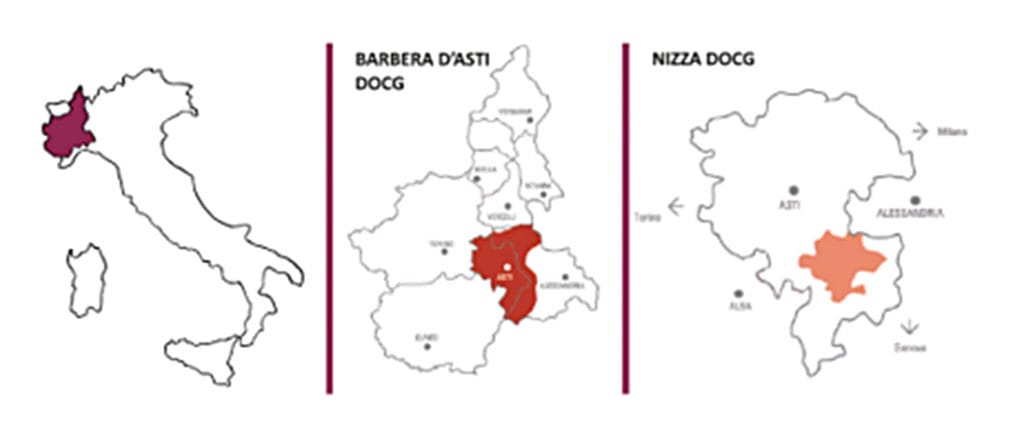
Nizza is obtained from pure Barbera grapes, with a minimum ageing of 18 months, of which at least 6 in wooden barrels, while Nizza Riserva DOCG is obtained with a minimum of 30 months of ageing, of which at least 12 in wood.
Territory: 18 authorised municipalities
Ampelographic base: 100% Barbera vine
Output per hectare: 70 quintals
Features of Nizza and Nizza Riserva D.O.C.G. wines for consumption:
- minimum total alcoholic strength by volume: 13.00%; for Riserva 13.50%;
- minimum total acidity: 5.0 g/l
- minimum non-reducing extract: 26.0 g/l
The colour is an intense ruby red, tending to garnet with ageing. The bouquet is intense, vinous when young, persistent: cherry, plum and dark berries predominate, evolving into hints of jam and fruit in spirit, then with more or less intense balsamic, spicy and sometimes floral notes; with ageing in wood, it develops hints of cinnamon, cocoa and liquorice. On the palate it is full, with great warmth and harmony. Ageing gives complexity and richness of sweet, velvety tannins and a long taste-olfactory persistence.
